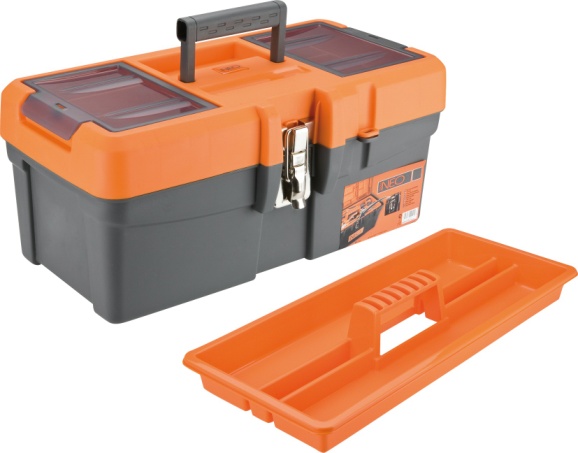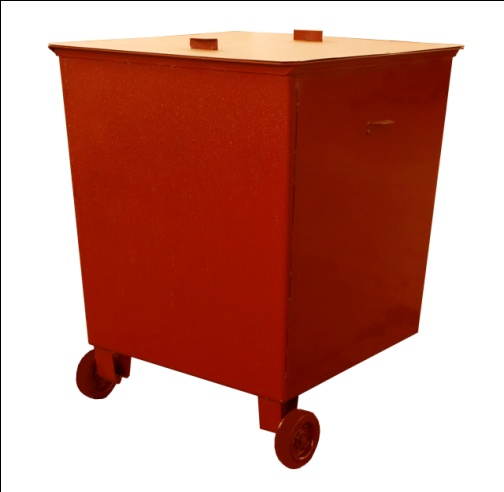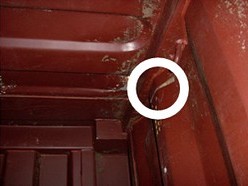
Container cargo handling
You will be able to: discuss container cargo handling procedures; explain the most frequent causes of container cargo damage and discuss how to avoid them; use SMCP for container cargo handling.
Topic 1 Container loading and securing
Starter
What are the containers below used for? Do they have anything in common?
Reading
Read the mini-case and discuss the possible ways of discovering a proble.
|
|
|
This small hole was not
discovered during the container inspection. As a result, the
cargo of cigarettes was damaged by water infiltrations. The
cost of the damage amounted to € 15,000.
|
|
|
|
||
|
|
|
2 Discuss if:
the container inspection is obligatory
it is possible to ignore minor damages of the container
Reading
3 a) Check the meaning of the words in bold type.
b) Scan the text and match the titles with the paragraphs.
Container standards |
Lashing |
Things to be checked |
Advantages of container cargo |
Loading and unloading |
Choosing a container |
_________________________________________
The practice of packing a large quantity of small goods into one big container makes for easier and quicker transfer between ship and quay, as well as reducing pilfering losses and damage caused by handling, as the goods are packed into the containers at the place of manufacture, then sealed for the transit and finally unpacked at the consignees' warehouse.
_________________________________________
Container loading and discharge is made easier if the vessel is upright and on an even keel, this is achieved by the ship's personnel operating ballast transfer pumps to transfer small quantities of water between trimming tanks.
___________________________________________
The container size was standardised in Imperial Units as 8 feet wide and 8 feet high which corresponds to 2.44m x 2.44m in Metric Units. The lengths of containers are usually 20 feet or 40 feet (6. lm or 12.2m) but intermediate lengths are in quite common use. There has been a move to vary heights, but container ship operators prefer standard sizes.
________________________________________
These containers have to be well secured and permanent rod iron lashings with rigging screws are fitted to the vessel's structure. The type and manner of the lashings will depend on container design and stowage.
________________________________________
Containers can be carried by any vessel and often are, but in small numbers. If loaded on deck on an ordinary vessel they must be especially well secured as they tend to be somewhat buoyant when seas are shipped. As early as when the order is placed, it is necessary to make sure that the container is suitable for the cargo. It is important to make sure that the container can cater for the required payload and possesses the necessary load-carrying capacity and the required volume.
__________________________________________________
If the correct container is available for loading then it is necessary to check whether it has a valid CSC plate or is involved in an ACEP program and that it is intact both inside and out, that it is properly sealed, free of odor and functionally operative. If the doors can be opened and closed, can the container be closed spray-tight after loading? Are the load securing points intact? Is the floor area clear, undamaged and free of protruding screws and nails which might damage the new cargo? Unfortunately, it is not usually possible to check below the floor.
To summarize, it is very simple to perform a check. However, it is often the easy things that do not receive enough attention and therefore result in considerable loss and damage.
4 Find the answers in the text and underline them.
What is the size of a standart container?
What vessels can carry containers?

5 Match the SMCP.
1.What is the container capacity of the vessel? 2. How many 20'/ 40' containers will the vessel load? 3. How many cars 20'/40' containers... can the vessel load? 4. What is the handling capacity of the container crane / gantry? 5. The (Container) lashings is / are damaged. |
a) The vessel will load ... 20'/ 40' containers. b) Replace the damaged ... . c) The container capacity is ... TEU. d) The handling capacity of container crane / gantry is ... containers per hour. e) The vessel can load ... 20'/40' containers on deck.
|
6 Give Russian equivalents.
What is the container capacity of the vessel? |
|
The container capacity is ... TEU. |
|
How many 20'/ 40' containers will the vessel load? |
|
The vessel will load ... 20'/ 40' containers. |
|
What is the handling capacity of the container crane / gantry? |
|
The handling capacity of container crane / gantry is ... containers per hour. |
|
The (Container) lashings is / are damaged. |
|
Replace the damaged ... . |
|
7 Transfer the messages into SMCP
Model: Look if everything was stowed carefully and safely – Check the careful and safe stowage
Have a look if they have finished unloading.
___________________________________
Put all the empty containers in topmost tiers.
___________________________________
Look if containers were damaged.
___________________________________
Damage of containers was caused by stormy sea.
___________________________________
The container was damaged during the procedure of unloading.
____________________________________
Fix the broken part of the container.
____________________________________
8 Read the text and answer the questions.
1. Is this type of ship widely used?
2. What type of cargo does she carry?
3. What speed can she reach?
4. Does she require complex loading and unloading arrangements?
5. What construction does she have?





